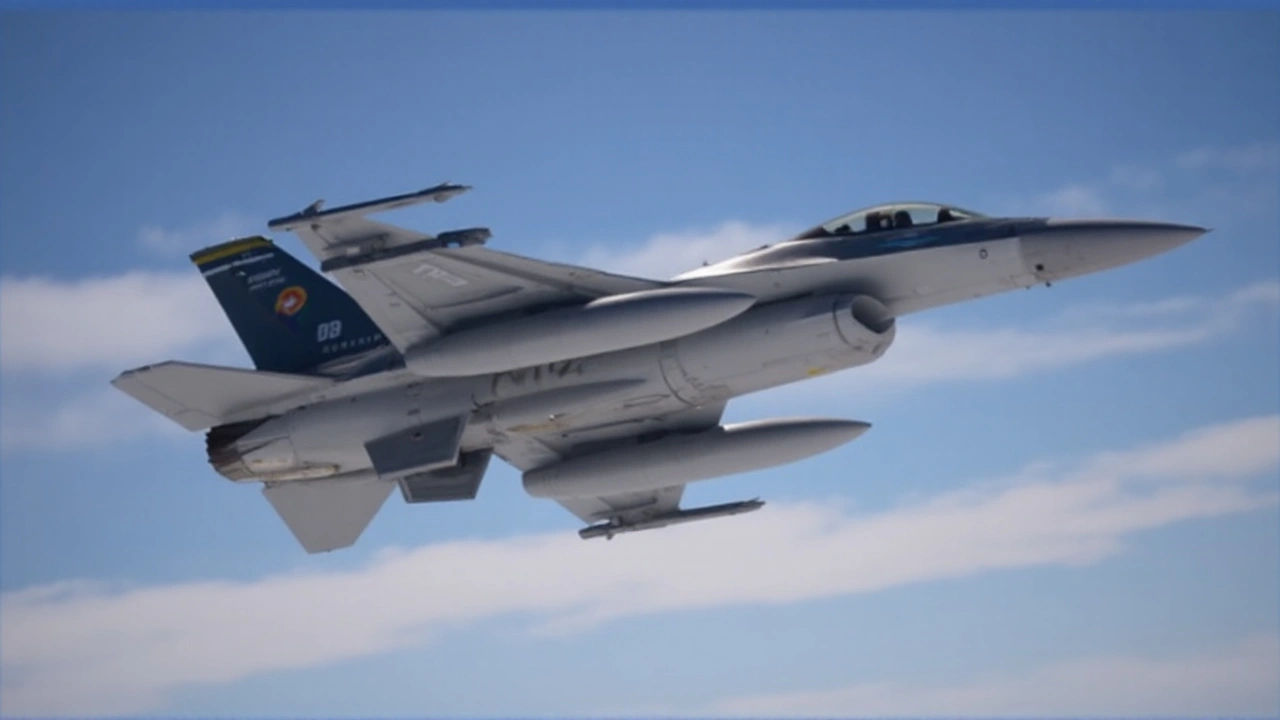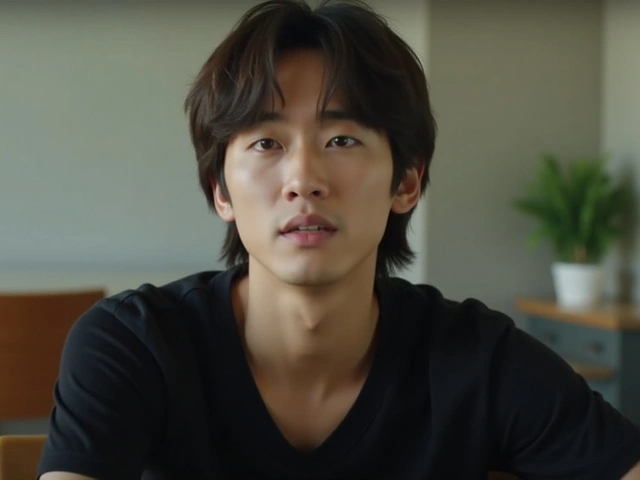What happened over Romania
Romania has become the second NATO country in recent months to confront an incursion by a Russian drone inside its airspace, a sign of how the war in Ukraine keeps spilling toward the alliance’s borders. On September 13, 2025, the Romanian Air Force scrambled two F-16s from the 86th Air Base at 18:23 local time after air-defense radars picked up an unidentified unmanned aircraft crossing into Romanian skies near the Danube Delta.
The jets—on quick-reaction alert as part of NATO’s integrated air defense—closed on the drone and shadowed it until it vanished from radar roughly 20 kilometers southwest of Chilia Veche, a fishing village tucked into the marshes that straddle the Ukrainian border. Authorities said the object did not fly over populated areas, no weapons were used, and there was no risk to civilians.
Defense officials in Bucharest condemned the incident and framed it as yet another test for NATO’s eastern flank. The message: Romania is ready to act fast and in coordination with its allies. The ministry stressed that procedures worked as designed—detect, scramble, identify, and keep residents safe—while diplomats lodged a protest through official channels.
The location matters. The Danube Delta sits right next to combat zones in southern Ukraine. Russian forces have launched waves of one-way attack drones—often Iranian-made Shahed variants rebadged by Russia—at Ukrainian ports and infrastructure along the river. Those drones fly low, slow, and long, hugging terrain to dodge radars. If their navigation is jammed or they malfunction, they can drift. That is how fragments and debris have repeatedly landed on Romanian territory since 2023. This time, Romanian authorities say the violation wasn’t just debris: it was an active air object that crossed into national airspace long enough to trigger a fighter response.
So why track and not shoot? Rules of engagement are tight over NATO territory. Pilots are expected to confirm what they are dealing with, weigh where debris might fall, and coordinate with ground-based air defenses. If a drone is unarmed or already outbound, and it poses no threat to people or critical sites, leaders can decide against firing. In this case, the object faded from radar over remote wetlands—no interception was needed.
Romania’s air-defense picture is far thicker than it was before the full-scale war in Ukraine. The country fields Patriot batteries already on duty, legacy HAWK units, and short-range systems that protect bases and coastal sites. NATO AWACS planes patrol the Black Sea region, feeding early warning data to national command posts. The Deveselu Aegis Ashore missile defense site adds another layer, even though it is tailored for ballistic missiles, not drones. On the fighter side, Romania’s F-16 fleet—brought in stages from Portugal and Norway and upgraded—now anchors the quick-reaction mission at the 86th Air Base in Fetești, with pilots trained to NATO standards and integrated into the alliance’s Southern Combined Air Operations Centre in Spain.
It’s worth recalling how this escalated over time. In 2023 and 2024, Romania found drone debris multiple times near the border. Villages along the Danube installed shelters and put out alerts during heavy Russian barrages on nearby Ukrainian ports like Reni and Izmail. Authorities moved mobile radars and observation teams into the delta. The result: shorter detection times and faster scramble orders when something heads the wrong way.
Bucharest’s stance has been steady—support Ukraine, protect NATO territory, avoid getting pulled into a direct clash. That balancing act means intercepts like this are handled with precision and restraint. The objective is simple: deny any normality to violations of allied airspace, even if brief, while keeping a cool head.

Why this keeps happening along NATO’s eastern flank
The Romania incident didn’t happen in isolation. It landed in the middle of a tense week. On September 20, 2025, Poland and other NATO air forces scrambled jets as Russia launched a massive mixed strike on Ukraine—hundreds of drones alongside cruise and ballistic missiles. A day earlier, Estonia reported that three Russian MiG-31s clipped its airspace over the Gulf of Finland, flying parallel to the border and dipping in to a depth of less than 10 kilometers. Moscow usually denies intent. The pattern keeps repeating.
Each episode adds friction to an already crowded sky. The war has turned the airspace around Ukraine into a maze of fast-moving military tracks, jamming, low-altitude profiles, and split-second decisions. NATO states hugging the conflict—Romania and Bulgaria along the Black Sea, Poland and Slovakia to the west, the Baltic trio to the north—live with the spillover risk every night Russia launches a large attack.
Three things drive these incursions. First, physics and guidance errors: drones flying at low altitude with imperfect navigation can stray. Second, electronic warfare: heavy jamming can throw a drone off course or cause it to drift. Third, probing: short, deniable violations let Russia test sensors and reaction times without firing a shot. None of this makes it acceptable under international law, but it helps explain why these events keep happening despite tight NATO vigilance.
When a foreign military aircraft or drone crosses into NATO airspace, even for seconds, it evokes a specific playbook. National control centers alert the NATO Combined Air Operations Centre. Quick-reaction fighters are launched, air-defense batteries move to ready, and radar coverage is layered to keep eyes on the track. If the object turns back or exits quickly, the incident ends with a protest and a paper trail. If it lingers or threatens people or key sites, commanders have more options—up to and including shooting it down.
Romania’s response fits that pattern. The F-16s were airborne within minutes, the track was maintained as long as sensors allowed, and authorities kept the public informed while urging calm. That clarity matters. People along the Danube Delta have lived with sirens and the thump of distant explosions for two years. Transparent updates blunt rumors and deter panic.
The geography stacks the odds. Chilia Veche sits inside a tight corridor of river channels and reeds, with the Ukrainian town of Kiliia across the water. From Crimea and occupied parts of southern Ukraine, one-way drones often route toward Odesa and along the river line at night. Wind, jamming, or fuel starvation can push them off plan. Even a few hundred meters of drift can cross a border in that stretch of the delta.
The stakes aren’t only local. Each airspace breach tests NATO’s promise to defend “every inch” of allied territory. That phrase is more than rhetoric; it’s a deterrent. Show up fast, act professionally, and keep incidents contained. The alliance has poured assets into the region since 2022: extra AWACS sorties, more air policing rotations, Patriot and NASAMS deployments across several member states, and frequent drills that tie together ground, air, and naval sensors. Romania has hosted many of those exercises, building muscle memory for exactly the kind of night described on September 13.
There’s also the legal line. Article 5—the collective defense clause—doesn’t switch on for every violation. It is political as much as legal. Countries first lean on diplomatic protests, evidence gathering, and, when needed, Article 4 consultations to coordinate responses. That is the lane Romania stayed in here: deter future incidents, show capability, avoid escalation.
What might change next? The more Russia saturates Ukraine with drones and missiles, the more spillover risk rises for neighbors. NATO countries are already adapting. Expect more low-altitude radar coverage near borders, more counter-drone systems at critical sites, and tighter civil aviation procedures during large cross-border strikes. Romania has been installing additional sensors along the coast and river, improving data fusion between military and civilian radars, and deepening coordination with Ukraine so tracks can be handed over as they approach the border.
Two operational details are likely to matter in future incidents. First, time of day. Most Shahed-type drones fly at night, when visual identification is harder and civilian air traffic is lighter. Second, shoot/no-shoot criteria. If a drone is armed, inbound, or loitering over sensitive infrastructure, the response will be different than if it is skirting away over marshland. Public safety and debris risk will remain the top filter.
The week’s other incidents underline the pressure on NATO air crews and controllers. Poland’s frequent scrambles mirror the tempo of Russia’s large-scale attacks on Ukraine. Some objects cross briefly; others clip the border and turn back. Estonia’s report of MiG-31s breaching its airspace shows this is not only a drone problem. Fast jets flying parallel to borders at high speed leave little time for decisions and lots of room for miscalculation. That is why the alliance keeps communication lines open—to avoid a tactical mistake turning into a strategic crisis.
For Romania, the message to its own citizens is straightforward: the air force is watching, the alert system works, and there’s no appetite for theatrics. For Moscow, the signal is just as clear: even short violations will draw a rapid, coordinated response. For everyone living along the eastern flank, nights like September 13 are a reminder that the war next door can nick the edge of NATO airspace without warning.
Watch three things from here. One: whether Romania recovers any debris or electronic signatures that identify the exact drone type. Two: whether similar tracks show up along the delta in the coming weeks, which would suggest a pattern. Three: whether NATO adjusts alert levels or moves more counter-drone assets closer to the river and the Black Sea, especially on nights when Ukraine faces mass strikes.
This is the hard routine of deterrence in 2025. Keep radars on, keep jets fueled, and respond fast without overreacting. Romania’s F-16s did their job. The next test may come on another windy night over the reeds, with the same goal—protect the border, keep people safe, and make sure small violations stay small.






This is what happens when you let drones fly like they’re on a Sunday picnic.
Oh wow, a drone drifted. How tragic. Meanwhile, NATO’s entire eastern flank is basically a Russian drone parking lot. You call that deterrence? I call it a slow-motion surrender wrapped in F-16s and press releases.
The operational discipline demonstrated here is exemplary. Detection, identification, shadowing, and restraint-each phase executed with precision. This is not weakness; it is the hallmark of a mature defense posture.
They didn’t shoot it down?!? Are we seriously letting Russian drones take scenic tours over NATO soil now? Next thing you know, one’ll land in Bucharest and start selling pirated Ukrainian memes. This isn’t defense-it’s a TikTok challenge with jet fighters!
There’s a quiet poetry in a drone lost to wind and jamming-flying not out of malice, but because the world forgot to tell it where to stop. We scramble jets to chase ghosts… and call it sovereignty. How very human.
We need more of this. Calm. Collected. Professional. No theatrics, no panic-just solid, trained responses. This is how you deter without escalating. Romania’s doing NATO proud.
DRONE DRAMA 🚨💥 Russia’s new hobby: flying drones like they’re Airbnb hosts in NATO backyards. ‘Hey, just a quick stay, no weapons, just vibes.’ Yeah right. I’m calling it: the Drone Tourism Act of 2025. 🛩️🌍 #BorderVacation
Okay but imagine being a fisherman in Chilia Veche. One minute you’re mending nets, the next-jet engines screaming overhead. And you’re just like… ‘Again? Really?’ We need better warnings, not just better jets. These people live with this every night. 🙏
It’s important to note that the detection time has improved significantly since 2023… and the response protocol has been refined through repeated drills… and the integration with NATO’s CAOC has proven effective… and the public communication has remained clear… and the lack of civilian harm is a direct result of restraint… and this is exactly how deterrence should function…
One thing people overlook: these drones aren’t always controlled. Many are just lost. The real question isn’t ‘Why didn’t they shoot?’ but ‘Why are we still getting these drifts?’ We need better jamming countermeasures and better coordination with Ukrainian intel to predict drift patterns. It’s not just defense-it’s prediction.
It’s easy to judge from afar. But for the families living near the delta, this isn’t geopolitics-it’s sleepless nights and sirens. Romania’s calm response is a gift to them. Not every threat needs to be met with fire.
Look at how far Romania has come. Two years ago, they were scrambling to even spot these drones. Now? They’re tracking them, coordinating with NATO, and keeping their people calm. This isn’t luck-it’s hard work, training, and commitment. We should be applauding this, not mocking it.
They didn’t shoot it down… and yet, the world still trembles. Isn’t that the real horror? That we’ve come to expect this… and still, no one dares to act. We are all just watching… waiting… hoping it doesn’t hit us next.
It is imperative to recognize the strategic acumen displayed by the Romanian Armed Forces in adhering to established NATO protocols. The preservation of operational restraint, coupled with the fidelity of sensor tracking and interagency communication, constitutes a model of asymmetric deterrence in the contemporary theater of hybrid warfare.
Let’s send love to the F-16 pilots 🤍💙 They’re flying through the dark for us. No drama, no fanfare-just quiet heroism. Keep those jets fueled, Romania. We got you! ✈️❤️
the drones are just lost not evil the real problem is the war is spilling everywhere we need peace not more jets